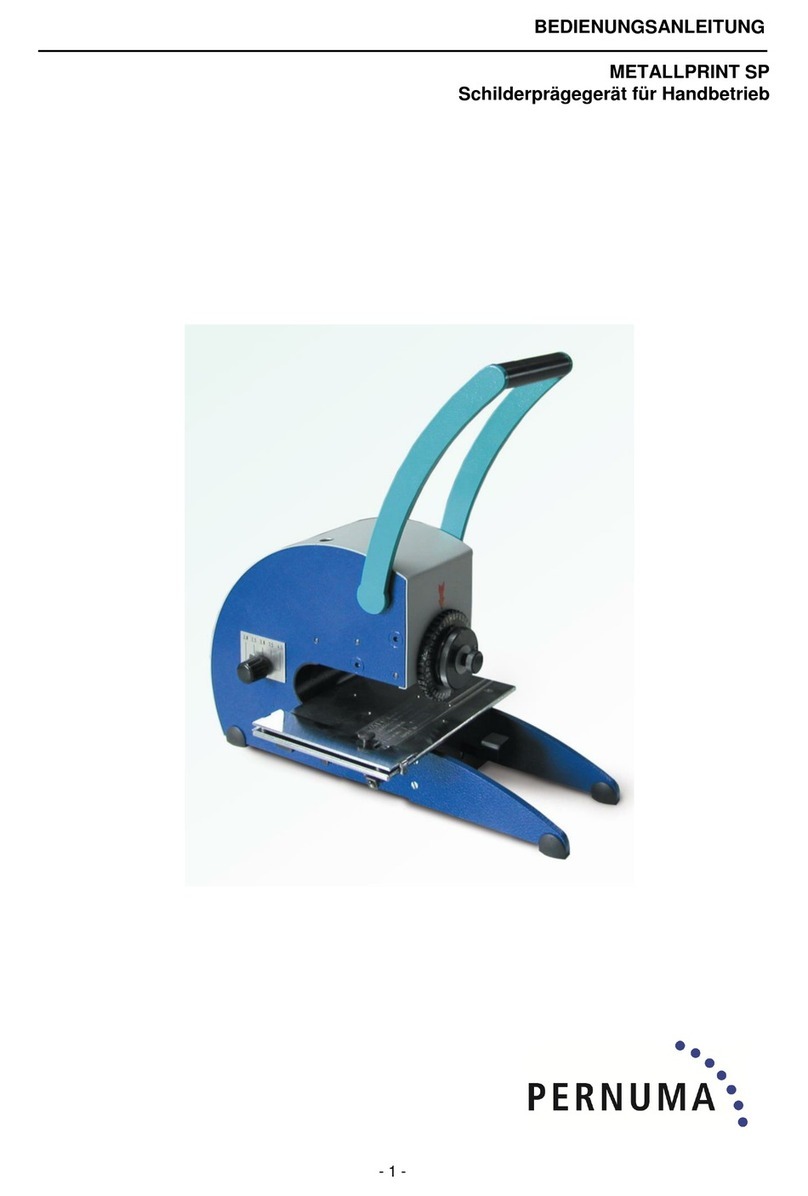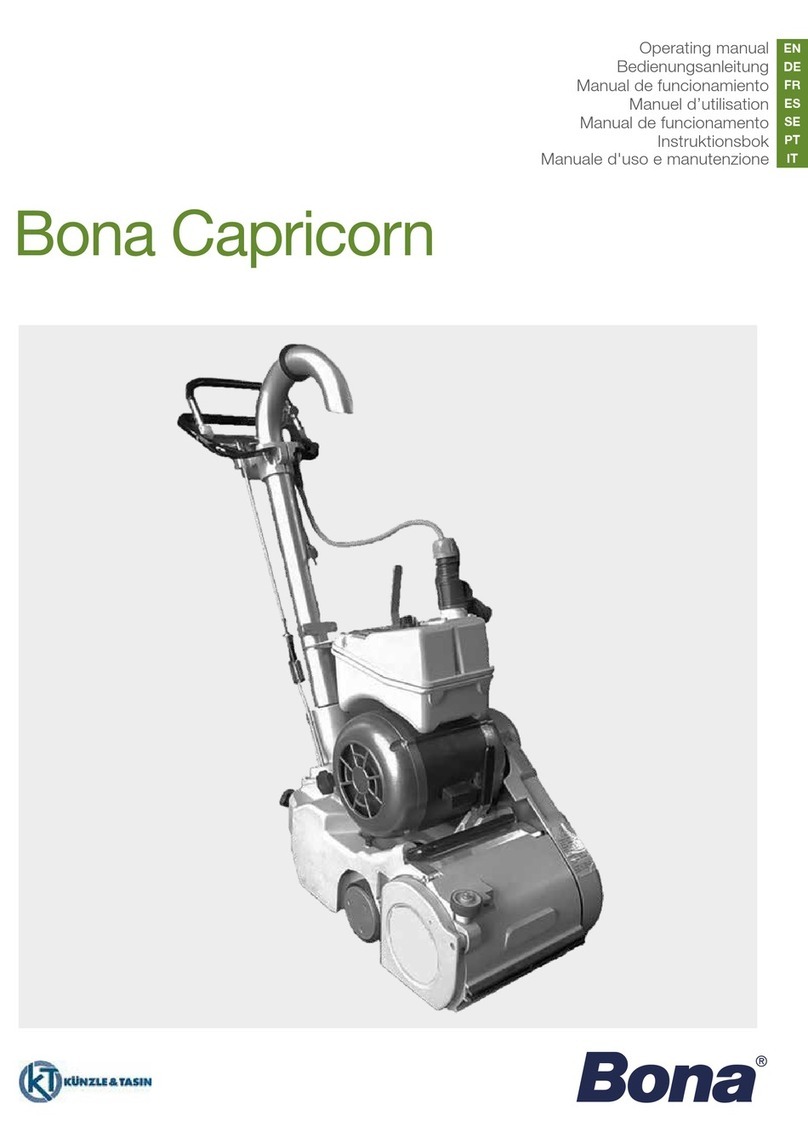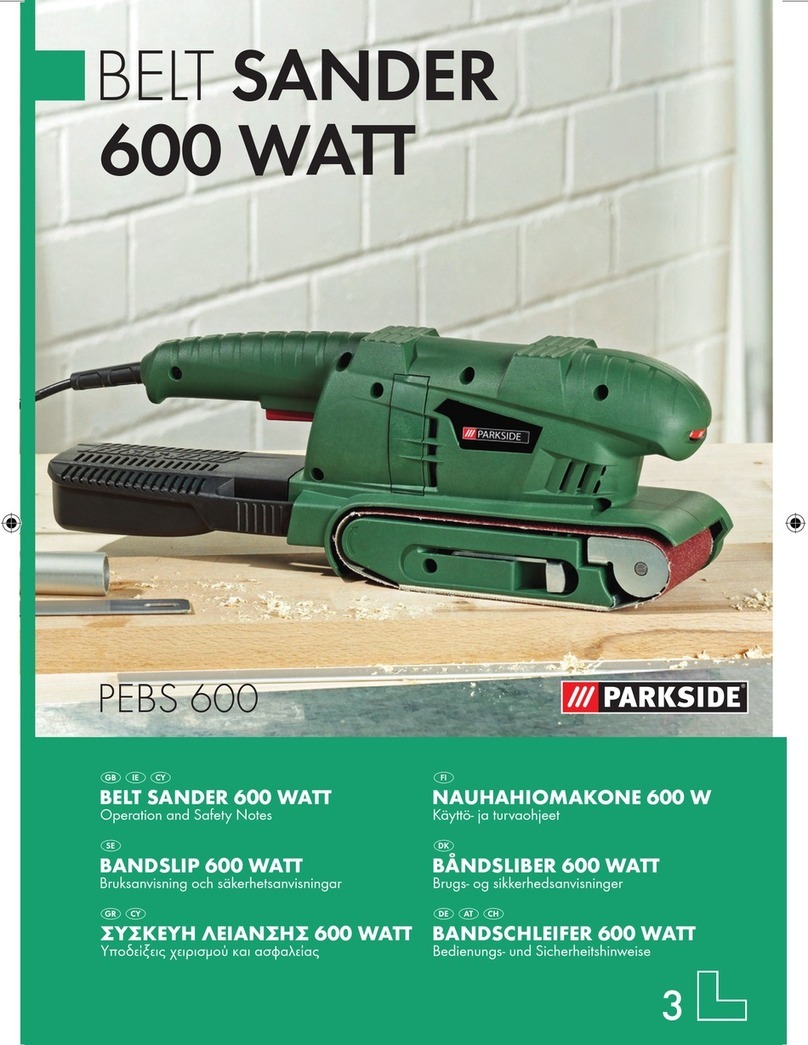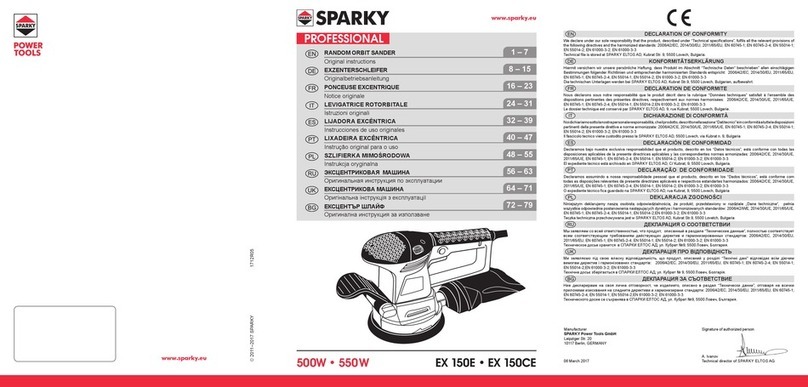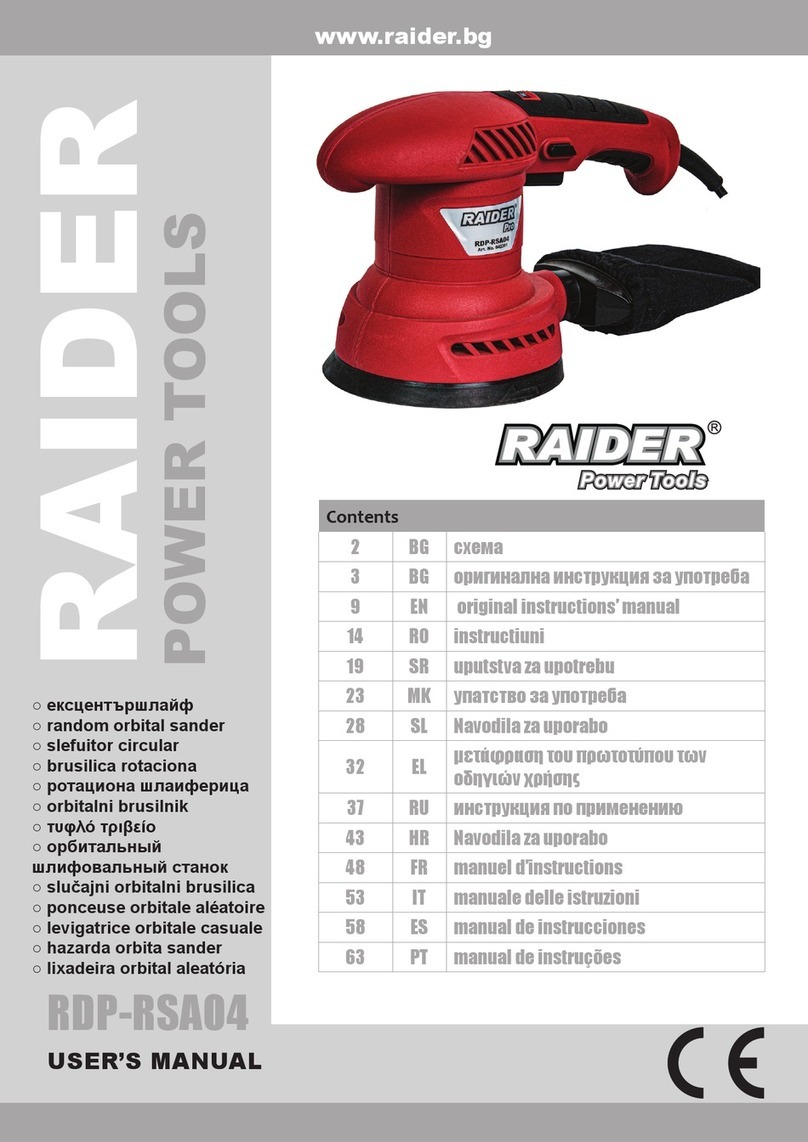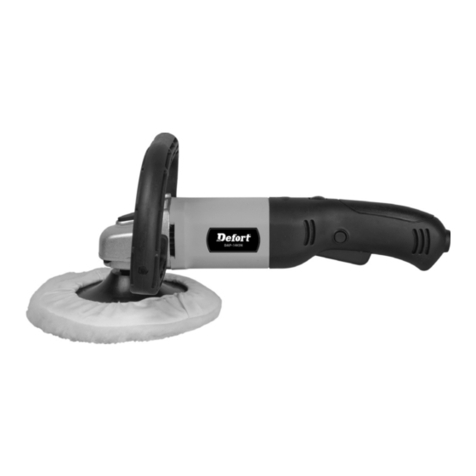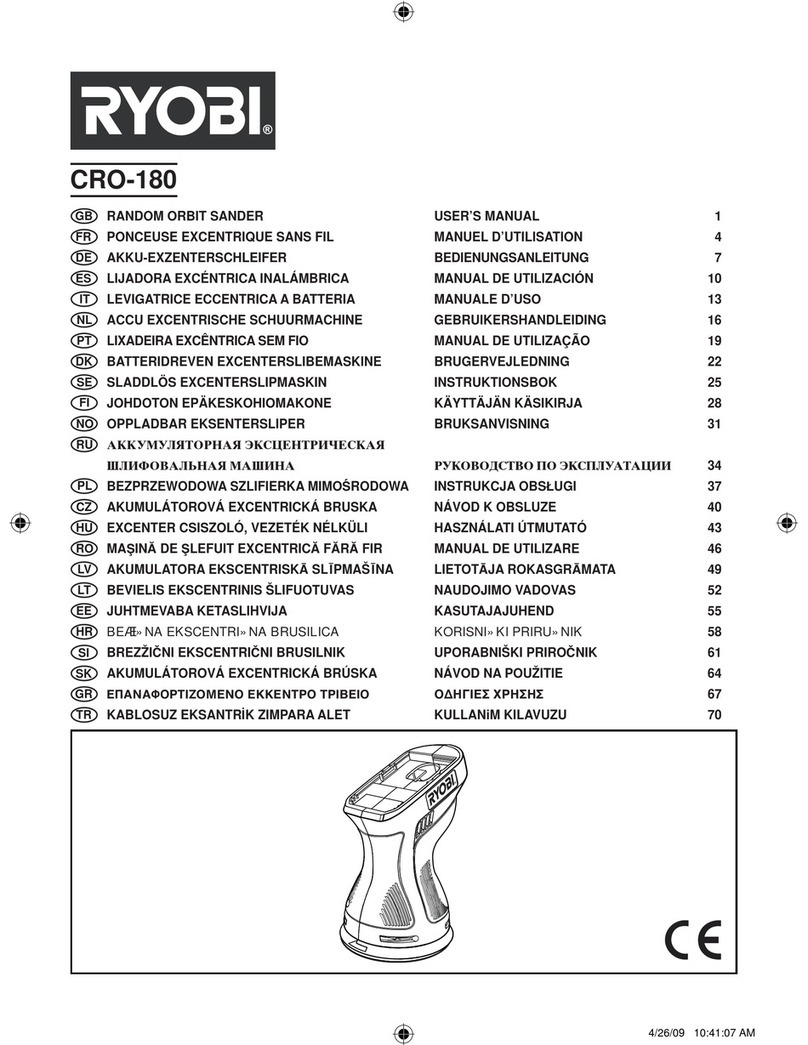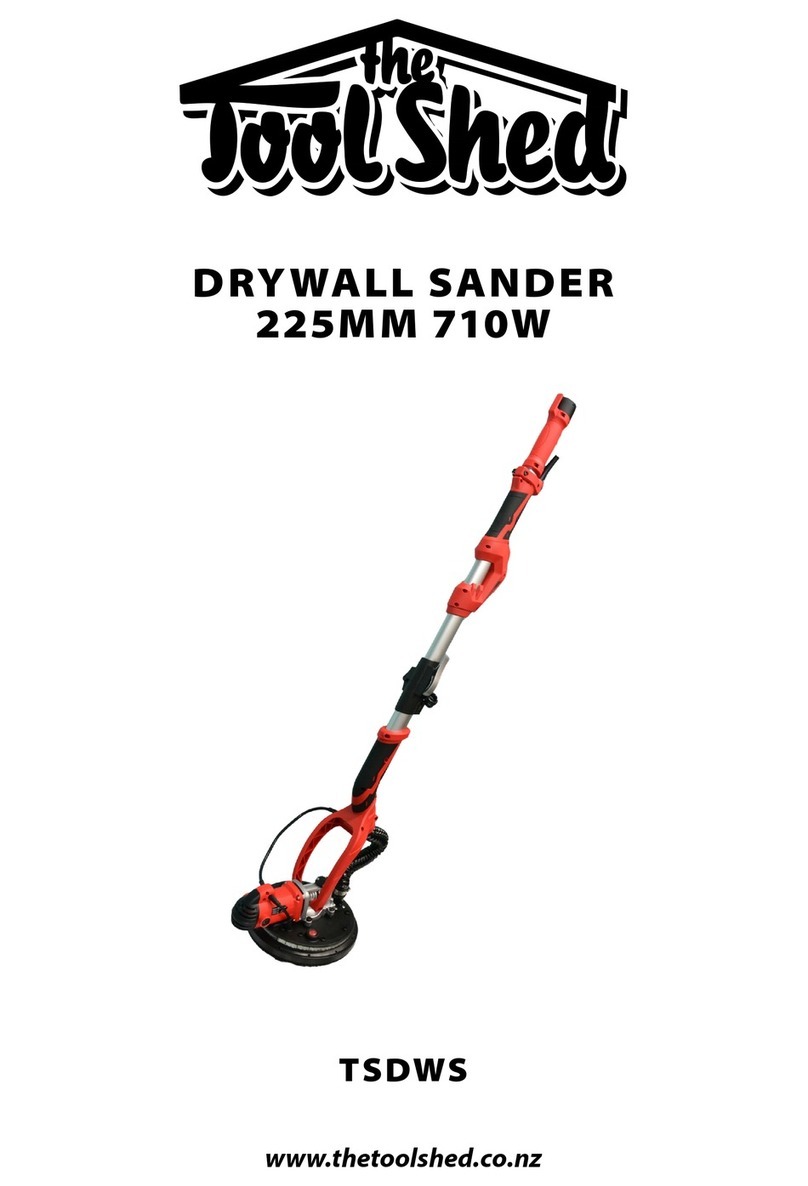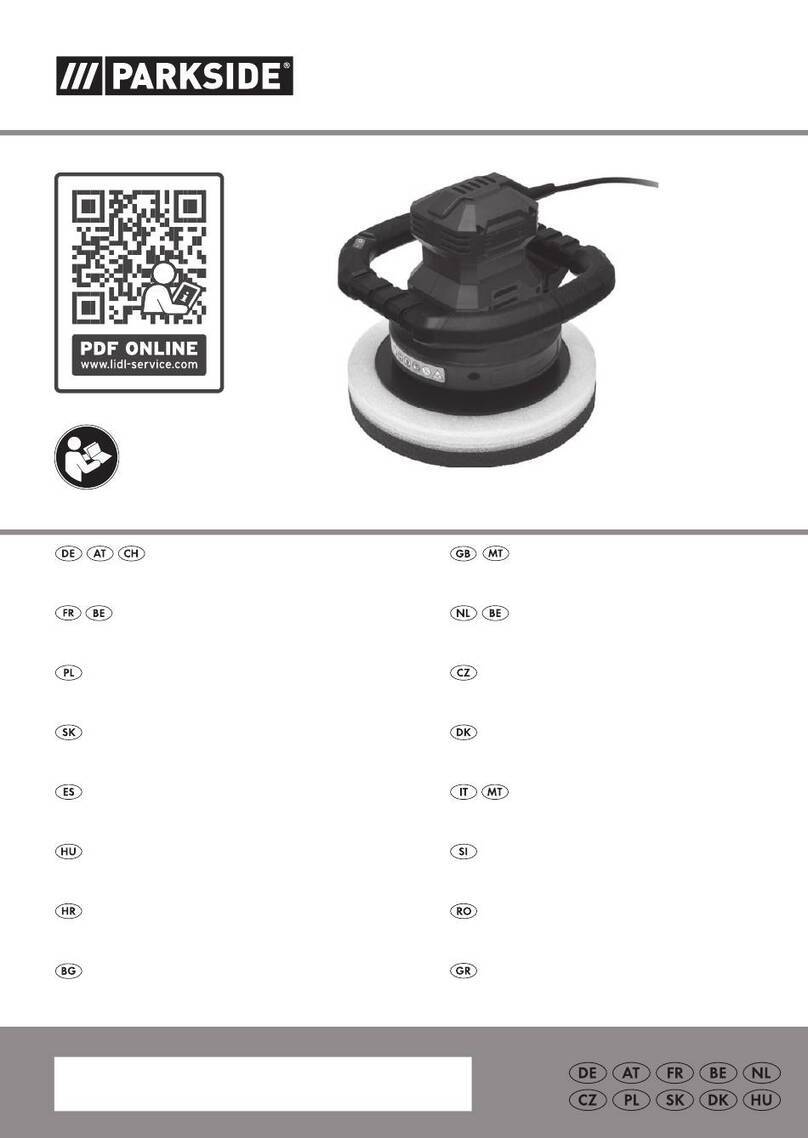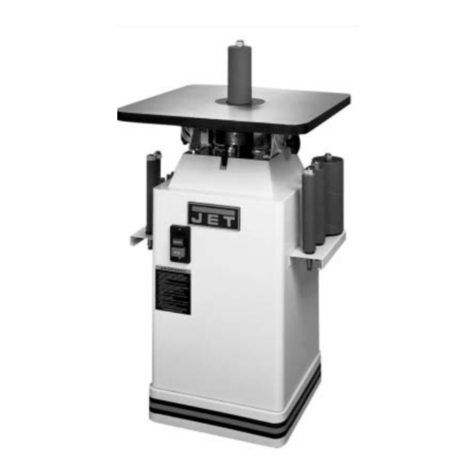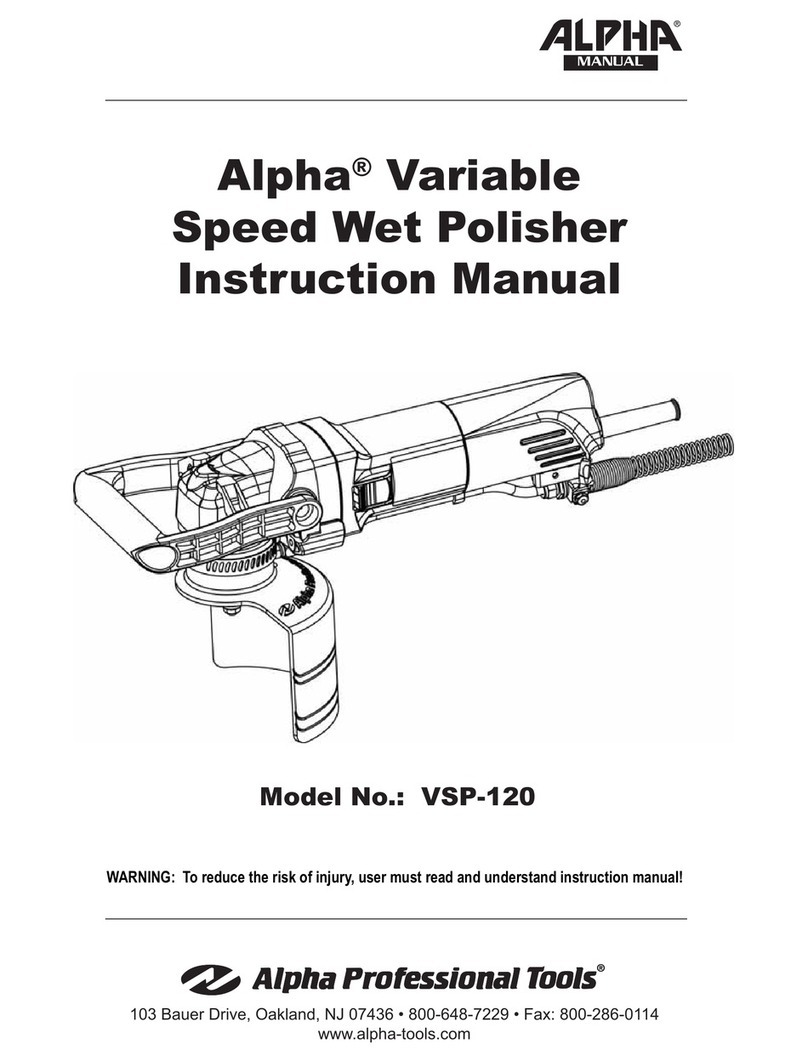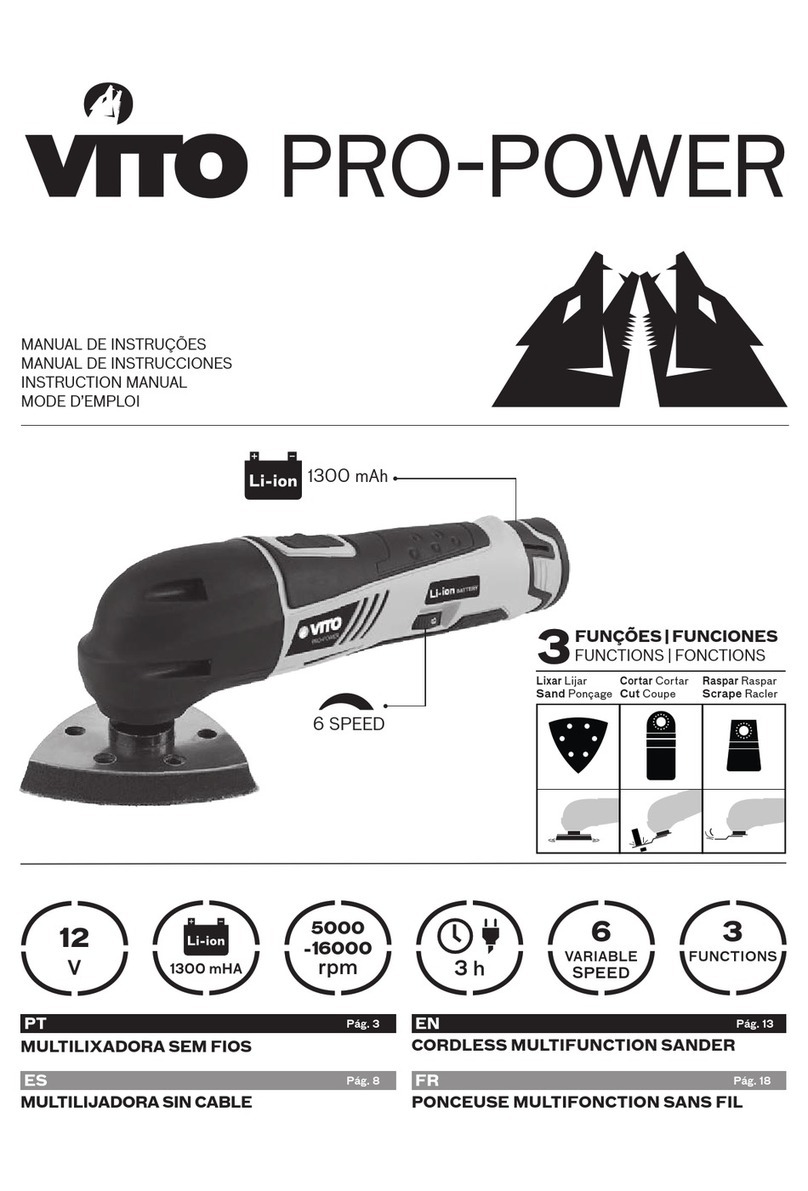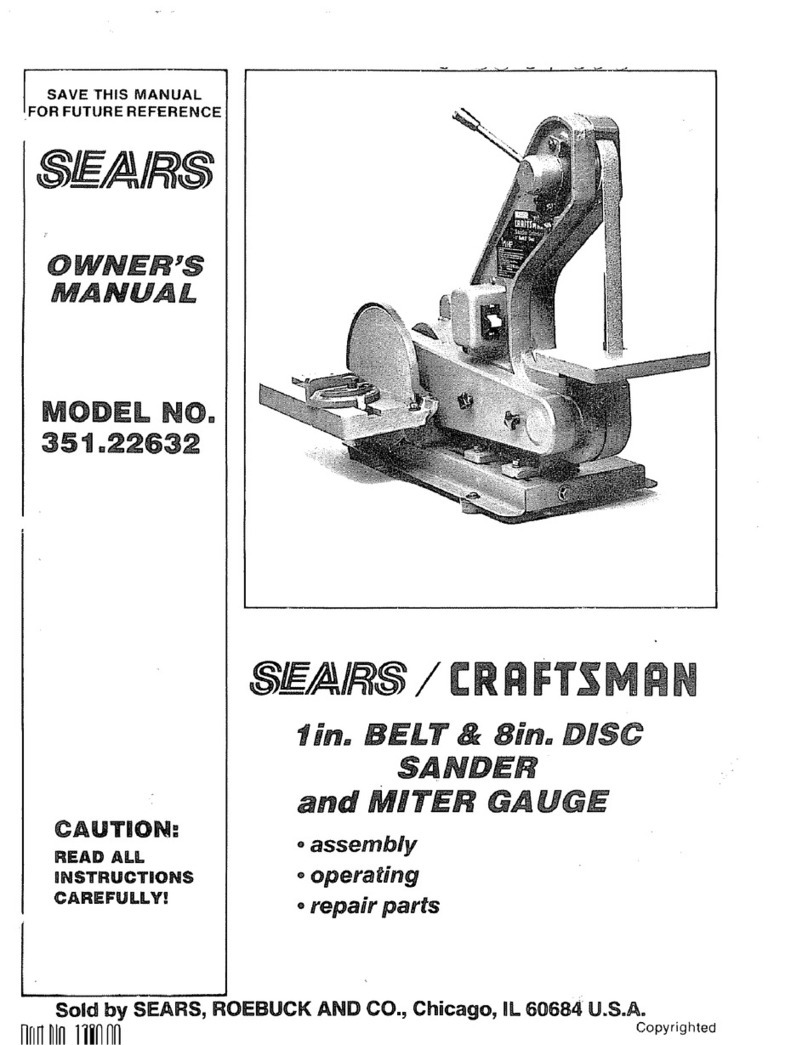Certa CTMSESNDRXA User manual


GENERAL POWER TOOL SAFETY WARNINGS
WARNING! Read all safety warnings and all instructi ns. Failure
to follow the warnings and instructions may result in electric shock, fire
and/or serious injury.
Save all warnings and instructi ns f r future reference.
1) W rk area safety
Keep w rk area clean and well lit.
Cluttered and dark areas invite accidents.
D n t perate p wer t ls in expl sive atm spheres, such as
in the presence f flammable liquids, gases r dust.
Power tools create sparks which may ignite the dust or fumes.
Keep children and bystanders away while perating a p wer
t l.
Distractions can cause you to lose control.
2) Electrical safety
P wer t l plugs must match the utlet. Never m dify the plug
in any way. D n t use any adapter plugs with earthed
(gr unded) p wer t ls.
Unmodified plugs and matching outlets will reduce risk of shock.
Av id b dy c ntact with earthed r gr unded surfaces, such as
pipes, radiat rs, ranges and refrigerat rs.
here is an increased risk of electric shock if your body is earthed or
grounded.
D n t exp se p wer t ls t rain r wet c nditi ns.
Water entering the power tool will increase the risk of electric shock.
D n t abuse the c rd. Never use the c rd f r carrying, pulling
r unplugging the p wer t l. Keep c rd away fr m heat, il,
sharp edges r m ving parts.
Damaged or entangled cords increase the risk of electric shock.
When using a p wer t l utd rs, use an extensi n c rd
suitable f r utd r use.
Use of a cord suitable for outdoor use reduces the risk of electric
shock.

3) Pers nal safety
Stay alert, watch what y u are d ing and use c mm n sense
when perating a p wer t l. D n t use a p wer t l while y u
are tired r under the influence f drugs, alc h l r medicati n.
A moment of inattention while operating power tools may result in
serious personal injury.
Use safety equipment. Always wear eye pr tecti n.
Safety equipment such as dust mask, non-skid safety shoes, hard
hat, or hearing protection used for appropriate conditions will
reduce personal injuries
Av id accidental starting. Ensure the switch is in the ff-
p siti n bef re plugging in.
Carrying power tools with your fingers on the switch or plugging in
power tools that have the switch in invites accidents.
Rem ve any adjusting key r wrench bef re turning the
p wer t l n.
A wrench or a key left attached to a rotating part of a power tool
may result in personal injury.
D n t verreach. Keep pr per f ting and balance at all
times.
his enables better control of the power tool in unexpected
situations.
Dress pr perly. D n t wear l se cl thing r jewellery. Keep
y ur hair, cl thing and gl ves away fr m m ving parts.
Loose clothes, jewellery or long hair can get caught in moving
parts.
If devices are pr vided f r the c nnecti n f dust extracti n
and c llecti n facilities, ensure these are c nnected and
pr perly used.
Use of these devices can reduce dust-related hazards.
4) P wer t l use and care
D n t f rce the p wer t l. Use the c rrect p wer t l f r
y ur applicati n.
he correct power tool will do the job better and safer at the rate
for which it is designed.

D n t use the p wer t l if the switch d es n t turn it n and
ff.
Any power tool that cannot be controlled with the switch is
dangerous and must be repaired.
Disc nnect the plug fr m the p wer s urce and/ r the battery
pack fr m the p wer t l bef re making any adjustments,
changing access ries, r st ring p wer t ls. Such
preventative safety measures reduce the risk of starting power
tools accidentally.
St re idle p wer t ls ut f reach f children and d n t
all w pers ns unfamiliar with the p wer t l r these
instructi ns t perate the p wer t l.
Power tools are dangerous in the hands of untrained users.
Maintain p wer t ls. Check f r misalignment r binding f
m ving parts, breakage f parts and any ther c nditi n that
may affect the p wer t ls perati n. If damaged, have the
p wer t l repaired bef re use.
Many accidents are caused by poorly maintained power tools.
Keep cutting t ls sharp and clean.
Properly maintained cutting tools with sharp cutting edges are less
likely to bind and easier to control.
Use the p wer t l, access ries and t l bits etc. in
acc rdance with these instructi ns and in the manner
intended f r the particular type f p wer t l, taking int
acc unt the w rking c nditi ns and the w rk t be
perf rmed.
Use of the power tool for operations different from those intended
could result in a hazardous situation.
5) Service
Have y ur p wer t l serviced by a qualified repair pers n
using nly identical replacement parts.
his will ensure that the safety of the power tool is maintained.

ADDITIONAL SAFETY RULES FOR YOUR MULTI-SANDER
•Never use your multi-sander for wet sanding with accessories,
also for sawing, scraping, cutting, polishing, and separating.
•Always wear eye protection.
•Always wear ear protection during extended periods of operation.
•Always wear a dust mask if the operation is dusty.
•Always inspect and remove all nails and screws etc before sanding.
•Always check walls and ceilings to avoid hidden power cables and
pipes. A metal detector can be obtained from any good DIY store for
this purpose.
•If possible, use clamping devices or other suitable means to secure
the work piece to a firm surface.
•Use the original accessories and the tool provided, no others.
•Only use accessories in good condition. Do not use torn or worn
accessories.
•Do not use a damaged plug and cable, if damaged have them
repaired. Always be aware of the cord location.
•Do not abuse the cord. Never use the cord to carry the tools or pull
the plug from the outlet. Keep cord away from heat, oil, sharp edges
or moving parts. Replace damaged cords immediately.
•Unplug your tools before mounting or replacing accessories.
•Cauti n, fire hazard! Av id verheating the bject being
sanded as well as the sander.
Always empty the dust b x bef re taking breaks. In unfavorable
conditions, e.g., when sparks emit from sanding metals, sanding debris in
the dust box, micro filter or paper sack (or in the filter sack or filter of the
vacuum cleaner) can self-ignite. Particularly when mixed with remainders
of varnish, polyurethane or other chemical materials and when the sanding
debris is hot after long periods of working.
•Keep y ur w rkplace clean. Blends of materials are particularly
dangerous. Dust from light alloys can burn or explode.

WARNING!
S me dust particles created by p wer sanding, c ntain chemicals
kn wn t cause cancer, birth defects r ther repr ductive harm.
S me examples f these chemicals are:
•Lead from lead-based paints.
•Crystalline silica from bricks and cement and other masonry products.
•Arsenic and chromium from chemically treated lumber.
Your risk from these exposures varies, depending upon how often you do
this type of work. o reduce your exposure to these chemicals:
•Work in a well-ventilated area.
•Work with approved safety equipment, such as those dust masks
that are specially designed to filter microscopic particles.
WARNING!
Whilst w rking with this p wer t l, hand/arm vibrati ns ccur.
Adopt the correct working practices in order to reduce the exposure to
vibration.
CAUTION!
D n t let familiarity with y ur sander make y u careless.
Remember that a careless fraction of a second is sufficient to cause
severe injury.
Wear respiratory
protection. Wear eye
protection
Wear hearing protection.
Read all the safety instructions and guidelines
Double insulated
Conforms to relevant safety standard

his symbol is known as the ‘Crossed-out Wheelie Bin Symbol’.
When this symbol is marked on a product or battery, it means that
it should not be disposed of with your general household waste.
Some chemicals contained within electrical/electronic products or
batteries can be harmful to health and the environment. Only
dispose of electrical electronic/battery items in separate collection
schemes, which cater for the recovery and recycling of materials
contained within. Your co-operation is vital to ensure the success
of these schemes and for the protection of the environment.

SPECIFICATIONS:
1 2
7
5 4 3
6

COMPONENT LIST
1. On/off switch
2. Soft grip handle
3. Dust box cover clamp
4. Dust collection box
5. Hook and loop base plate
6. Sanding paper
7. Motor housing
ACCESSORIES
Dust collection box
30 x sanding paper (10x80#,10x100#,
10x120#)
TECHNICAL DATA
Rated voltage 230V~50Hz
Rated power 200W
No load speed 15000min-1
Sanding base size 140x140x80mm
Protection class II
Machine weight 1.6kg
Sound Pressure Level 71dB(A)
Sound Power Level 82dB(A)
VIBRATION INFORMATION
Vibration emission value
Vibration Information
a
h
= 1.23 m/s²
Uncertainty K = 1.5m/s²
The declared vibrati n t tal value has been measured in acc rdance
with a standard test meth d and may be used f r c mparing ne
t l with an ther.
The declared vibrati n t tal value may als be used in a preliminary
assessment f exp sure.

WARNING: he vibration emission value during actual use of the power
tool can differ from the declared value depending on the ways in which the tool
is used dependent on the following examples and other variations on how the
tool is used:
How the tool is used and the materials being sanded.
he tool being in good condition and well maintained.
o use the correct accessory for the tool and ensuring it is in good condition.
And the tool is being used as intended by its design and these instructions.
This t l may cause hand-arm vibrati n syndr me if its use is n t
adequately managed.
WARNING: o be accurate, an estimation of exposure level in the actual
conditions of use should also take account of all parts of the operating cycle
such as the times when the tool is switched off and when it is running idle but
not actually doing the job. his may significantly reduce the exposure level
over the total working period.
Helping to minimize your vibration exposure risk.
Maintain this tool in accordance with these instructions and keep well
lubricated (where appropriate).
If the tool is to be used regularly then invest in anti vibration accessories.
Avoid using tools in temperatures of 10° C or less.
Plan your work schedule to spread any high vibration tool use across a
number of days.

OPERATION INSTRUCTIONS
NOTE: Before using the tool, read the instruction book carefully.
1) SWITCHING ON AND OFF (See Fig. A1,A2)
1
Fig. A1
Fig.
A2
•o switch on, depress the “I” mark on the shank of the on/off switch (1)
to the end. o switch off, depress the “O “ mark on the shank of the
on/off switch (1) to the end.
2) USING THE DUST COLLECTION BOX (See Fig. B)
Your sander is equipped with a detachable dust collection box (4). Connect
the dust collection box to the adapters holes supplied. hen gently pull the
dust box and make sure it is fitted securely. Sanding dust is drawn up from
the holes in the sanding base plate and into the dust box during the
sanding operation.
Fig. B
4

2) EMPTY DUST BOX (See Fig. C)
Fig. C
3
For more efficient operation, please empty the dust box every 15
minutes. his will permit the air to flow through the box more efficiently.
o empty the dust box, remove the dust box from sander, then depress both
the dust box cover clamps (3) to remove the dust box cover from dust box
and shake out dust.
3) ATTACHING THE SANDING PAPER (See Fig. D)
Fig. D
WARNING. Always ensure that the tool is switched off and the plug is
removed from the power point before conducting any adjustments or
maintenance.
•Before fitting sanding paper, remove any dust or debris from the hook
and loop system on the base.
•Match the holes in the sanding paper with the holes in the base.
•Simply press the sanding paper to the base to attach it.

CAUTION!
ake care to regularly clean out the build up of dust on the base underneath
the sanding paper and not to let the sanding paper wear completely down
before replacing it. Failure to observe these two precautionary measures can
lead to damage to the hook and loop on the base plate and the sanding
paper will not attach properly.
WARNING!
Never use the sander unless the entire base is fitted with sanding paper.
4) SELECTING THE RIGHT GRADE OF SANDPAPER
WARNING!
Always ensure that the tool is switched off and the plug is removed from
the power point before conducting any adjustments or maintenance.
here are 10pcs of sanding paper (10 x 80#) supplied with the multi
sander. 80# sanding paper is used for rough sanding.
•100# sanding paper is used for normal sanding. 120# sanding paper
is used for fine sanding.
•Other grades of sanding paper can be purchased from your local
hardware store.
•You can buy 40#, 60# sanding paper for very coarse sanding.
You can buy 180#, 240#, 320#, 400# sanding paper for very fine sanding.
•It is best to make a trial run on a scrap piece of material to determine
the optimum grades of sandpaper for a particular job.
•If there are still marks on your work after sanding, try either going back to a
coarser grade and sanding the marks out before recommencing with the
original choice of grit, or try using a new piece of sandpaper to eliminate the
unwanted marks before going on to a finer grit and finishing the job.

5) USING THE SANDER (See Fig. E)
Fig. E
his sander can be used for most sanding operations on materials such
as wood, plastic, metal and painted surfaces.
Wear safety goggles, dust mask and ear defenders.
Switch the sander on whilst it is resting on the workpiece. ake care to hold
the whole area of the base plate on the work.
Move the sander over the surface of the work in a circular motion with an
even, moderate pressure.
Do not press down too heavily. his will slow down the motor and could lead
to overheating.
CAUTION: Where possible, clamp smaller workpieces to the bench.
NOTE: If there are still scratches on your work after sanding, try either of the
following: Go back to a coarser grit and sand the marks out before
recommencing with the original choice, or try using new sandpaper of the
same grit to eliminate the unwanted marks before progressing to a finer grit
and finishing the job.
WARNING!
Do not use the sander in wet or damp conditions.
MAINTENANCE
Rem ve the plug fr m the s cket bef re carrying ut any
adjustment, servicing r maintenance.
Your power tool requires no additional lubrication or maintenance. here
are no user serviceable parts in your power tool.
•Never use water or chemical cleaners to clean your power tool. Wipe
clean with a dry cloth. Always store your power tool in a dry place. Keep
the motor ventilation slots clean. Keep all working controls free of dust.

•Occasionally you may see sparks through the ventilation slots. his
is normal and will not damage your power tool.
•If the supply cord is damaged, it must be replaced by the manufacturer,
its service agent or similarly qualified persons in order to avoid a hazard.
GENERAL INSPECTION
Regularly check that all the fixing screws are tight. hey may vibrate
loose over time.
REPAIRS
Only an authorized service center should replace the cord set or carry out
other repairs. If the cord set is damaged or worn, have it replaced by an
authorized service center
POWER CORD MAINTENANCE
If the supply cord needs replacing, the task must be carried out by the
manufacturer, the manufacturer’s agent, or an authorized service center in
order to avoid a safety hazard.
TROUBLESHOOTING
•If your sander will not operate, check the power at the mains plug.
•If the sander does not abrade surface, check the sanding paper. If the
sanding paper has been worn, replace with the new paper and try again.
he paper must be kept in a dry place, if it is allowed to become damp,
the abrasive particles will lose their adhesion to the backing paper and
will not abrade correctly.
•If the sander does not move smoothly, the sanding paper may be
loose, damaged or wrinkled. Replace and try again.
•If a fault can not be rectified return the sander to an authorized dealer
for repair.

Warranty
he Kogan warranty applies to the riginal purchaser nly; this power tool
to be free from defects in material and workmanship. Subject to certain
exceptions, Kogan will repair or replace any part on an electric power tool
which, after examination, is determined to be defective in material or
workmanship for a period of one after the date of purchase unless otherwise
noted. Return of the power tool to Kogan is required together with the proof of
purchase should be included with the returned product. his warranty does
not apply to damage that is determined to be from repairs made or attempted
by anyone other than authorized agents, misuse, alterations, abuse, normal
wear and tear, lack of maintenance, or accidents. his warranty does not
include items considered as consumables.
Statut ry Rights
his warranty is in addition to and in no way affects your statutory rights.
Table of contents
Other Certa Sander manuals

